Chicken Pasanda Recipe is a mild, creamy curry that is perfect for anyone who loves a rich yet accessible dish. Bite-size boneless chicken pieces absorb the warmth of ginger, turmeric, and garlic when marinated with yogurt. They are air-fried and simmered in a creamy sauce made with onions, tomato, spices, and almond flour that give it a luscious texture. This dish is laced with fragrant saffron, scented with kewra water, and garnished with toasted slivered almonds. Chicken Pasanda transforms any meal into an unforgettable feast with layers of flavors when served with Basmati rice, paratha, or naan!
This Chicken Pasanda is a family recipe that has been perfected over the years. The secret to this dish has been in the marinade. Marinating the chicken and pan-frying or baking the chicken pieces is an essential step. This two-step process accentuates the luxurious gravy. Back then, chicken pieces were roasted over a charcoal fire instead of baking them. I have modified the recipe by air-frying the chicken.
What is Chicken Pasanda?
In fact, the original name for the pasanda is ‘Badaam Pasanda’. ‘Badaam’ in many Indian languages refers to almonds and the dish reflects its namesake. The strictly traditional, (one might argue) authentic method of cooking Badaam Pasanda was to marinate the meat strips with yogurt and various spices; stuff and roll the strips with blanched almonds and pistachios; secure the rolled meat with coconut coir or string; lower the parcel into a boiling sauce of seasoned yogurt and spices; and cook for about 30 minutes to an hour at low flame.
When you consider this method, it makes perfect sense why the goat or lamb thighs were flattened. When one tenderizes these cuts, holes are punctured into the flesh and connectivity tissue, enabling the meat to absorb spices and flavors before being slow-cooked. That said, what I am going to share with you is a family recipe for the Chicken Pasanda.
Origin:
Like most legendary dishes, the origin of the ‘pasanda’ recipe is a star, covered by controversy in Indian gastronomic circles. One version has it as the creation of the Mogul Nawabs, yet another places its origin within the Awadhi Kayasths, and both of them were in the 16th century. Yet, another text, the Manasollasa has a very similar dish being created in the 12th century by the chefs of King Somesvara III of the Western Chalukya dynasty.
Notwithstanding all this historical polemic, the phrase ‘pasanda’ comes from the Hindustani or Urdu phrase ‘pasanda’, which roughly translates to ‘highly favored or favorite.’ This is attributed to the fact that the original ‘pasanda’ used favored thigh cuts of goat or lamb. These pieces were tenderized using a mallet before being marinated and cooked in yogurt or coconut cream before garnishing with almonds.
Health benefits of almonds:
Nuts were once considered high-fat anathemas. New research has shown that nuts deliver higher fiber content and also have healthy monosaturated and polyunsaturated fats. The fat content in nuts helps foods retain moisture, while fiber helps maximize satiety so that one gets that ‘full’ feeling while exercising portion control. Nuts have been a traditional addition to Indian cuisine, used both as a flavor-enhancing thickener in sauce-making and as an added garnish. While my Chicken Pasanda recipe does not use mallets and stuffing, it does highlight the use of nuts as a flavor enhancer.
- Almonds: Almonds possess a subtle nutty taste which helps enrich the flavor of most proteins, especially meats, seafood, and tofu. The subtlety of this nut belies its status as a rich source of vitamin E that acts as an antioxidant to protect cells against oxidative damage. Their vitamins and mineral composition help reduce heart disease and risk factors like LDL (bad) cholesterol and excess belly fat.
Frequently Asked Questions:
1. Do I need to marinate and tenderize the chicken pieces?
Marinating the chicken prior to cooking or air frying them helps infuse the flavors into the meat. While the original meats in the traditional dish were goat or lamb, which required some tenderizing and flattening, this technique can be used with almost any protein, whether it is chicken, prawns, or paneer.
The Chicken Pasanda Recipe below enabled me to prepare the chicken version using the pasanda technique without resorting to flattening the meat. Instead, I used thin-cut, bite-size breast pieces. Chicken, being more tender than goat or lamb, allowed me to forgo the additional step of tying the meat into parcels with the nut stuffing.
2. Can heavy cream be added instead of nuts?
Restaurants add cream to the gravy to thicken it and bulk it. I recommend using quinoa flour as a substitute to thicken your gravy, which is a healthier alternative to heavy cream.
3. What is the difference between korma (or ‘kurma’) and Chicken Pasanda Recipe?
Chicken Pasanda Recipe is a milder gravy with the addition of ground almonds, although cream is optional. Korma has ground coconut or coconut milk added to the gravy. It depends on which version you make. If you use the traditional method I’ve described above, it’s completely different because the meat is seasoned and marinated with nuts before it is slow-cooked. In most Indian households, meats are seasoned with salt, turmeric, ginger, and garlic before cooking, especially if the meat is ‘gamey’. Once that is done, the meat is usually sautéed or precooked before the sauce is added.
Traditional korma is made of yogurt, ground almonds, cashew nuts, and/or coconut milk to give the dish a smooth, creamy texture. Modern restaurants distinguish korma and pasanda based on color. Korma tends to be green or yellow depending on the spices used, while pasanda is more a yellow-cream, mild sauce composed of yogurt and cashews or almonds. Sometimes, saffron or rose petals are added for color, flavor, and texture.
4. Can I make the Chicken Pasanda Recipe with another type of protein?
Of course, it is important to remember that pasanda, in its modern form, is a technique. The key is to marinate the protein with the nuts and/or yogurt. You can also grind the nuts and use it as a coat. It is important to remember that blanching a nut gives it a milder flavor while roasting it does the opposite because it metabolizes the fats inside. I used almond flour in this recipe.
This post may contain affiliate links. As an Amazon Associate, I earn from qualifying purchases at no extra cost to you.
If you’ve tried this recipe or have questions, I would love to hear from you. Please feel free to share (below) your thoughts, comments, or any questions that you might have. If you like my recipes, you could subscribe to my mailing list for the latest recipes that will be delivered to your inbox. From my pen to your table, Bon Appetit!
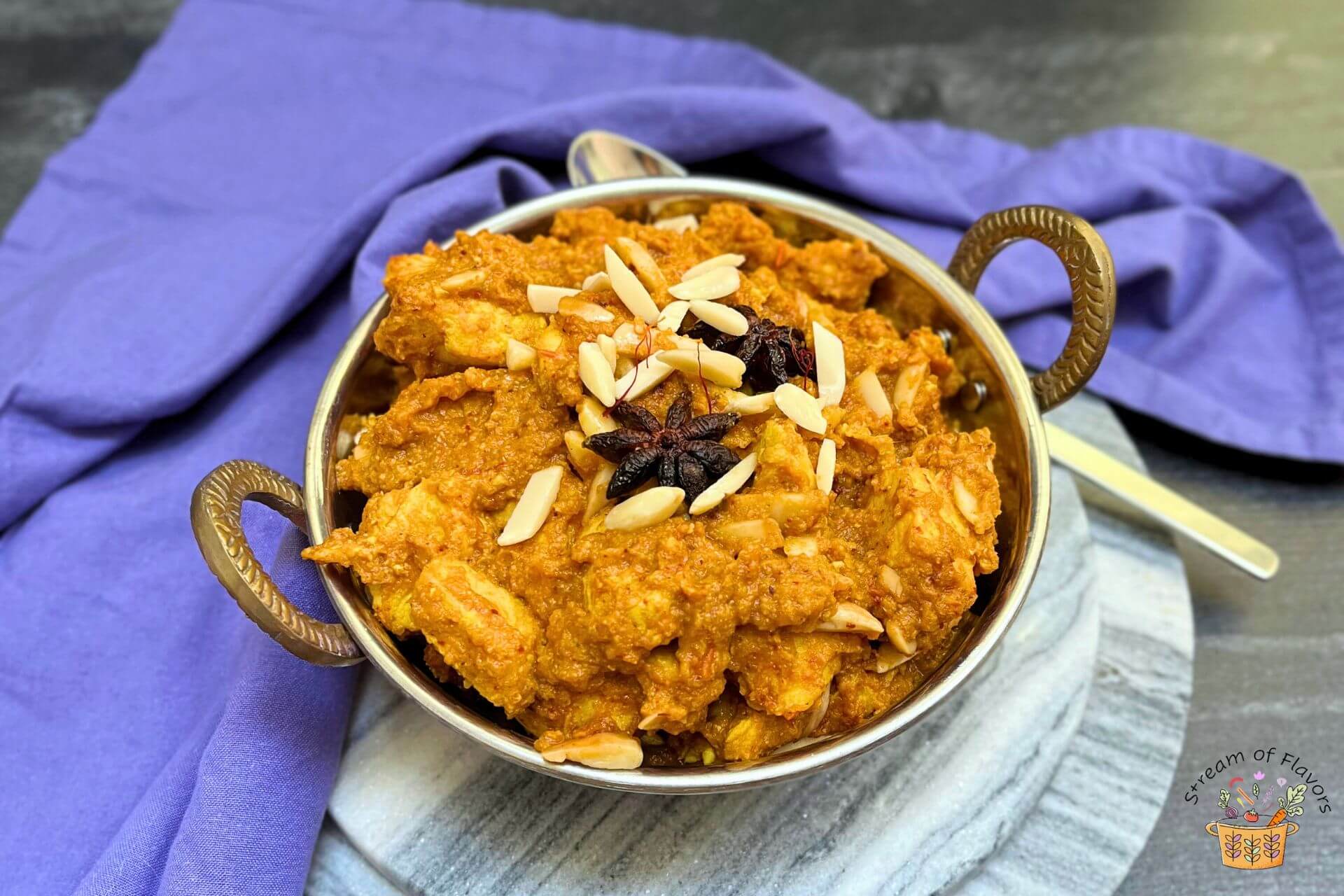
Ingredients:
For the marinade:
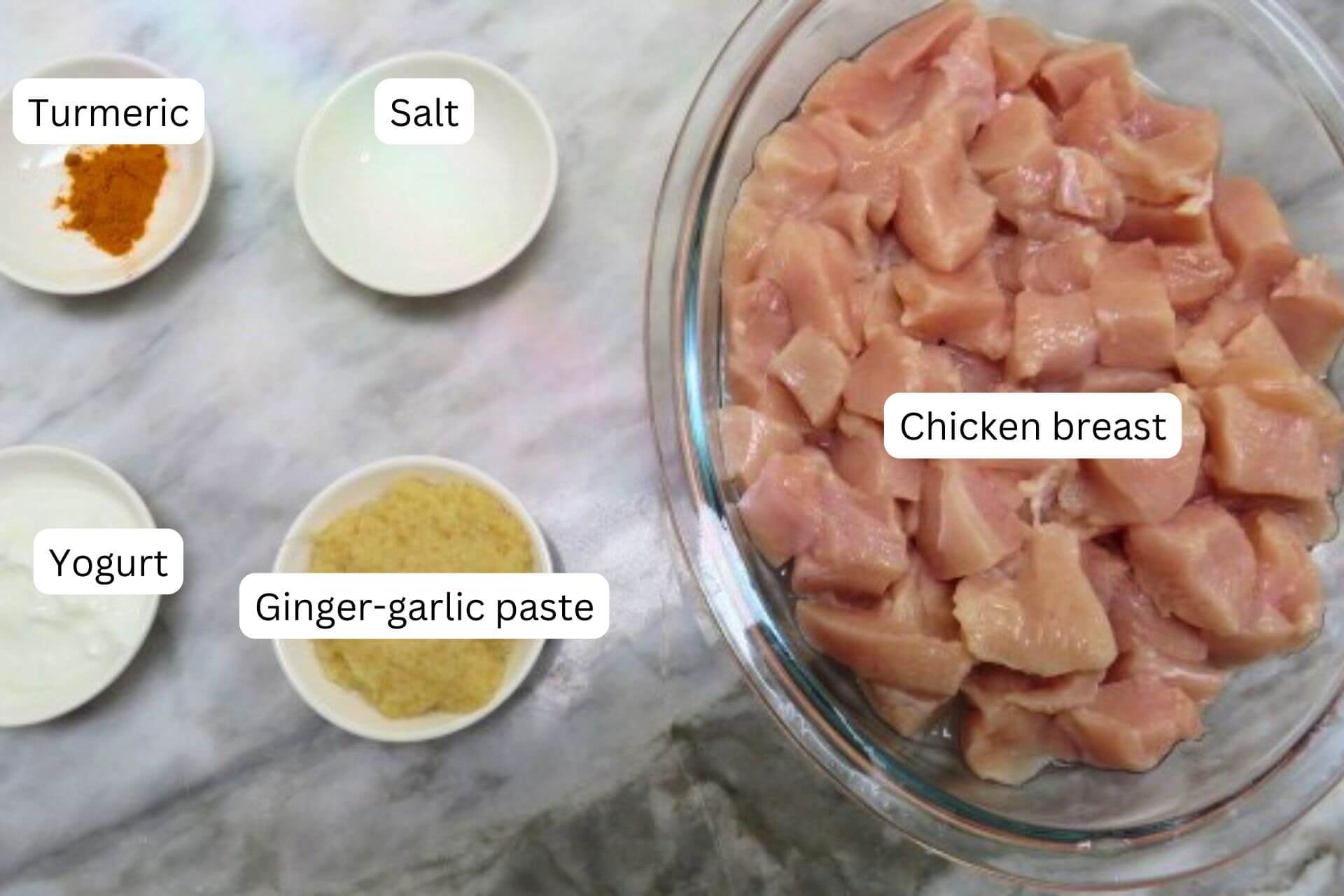
- Chicken breasts: Boneless pieces of chicken breasts (or substitute with lamb, goat, or paneer).
- Ginger and garlic paste: Grind the peeled and chopped ginger (1.5 tbsp) and garlic (6 cloves) with half a tablespoon of water to make a paste.
- Yogurt: Plain whole yogurt (or use hung yogurt without the whey or Greek yogurt)
For the spice mixture:
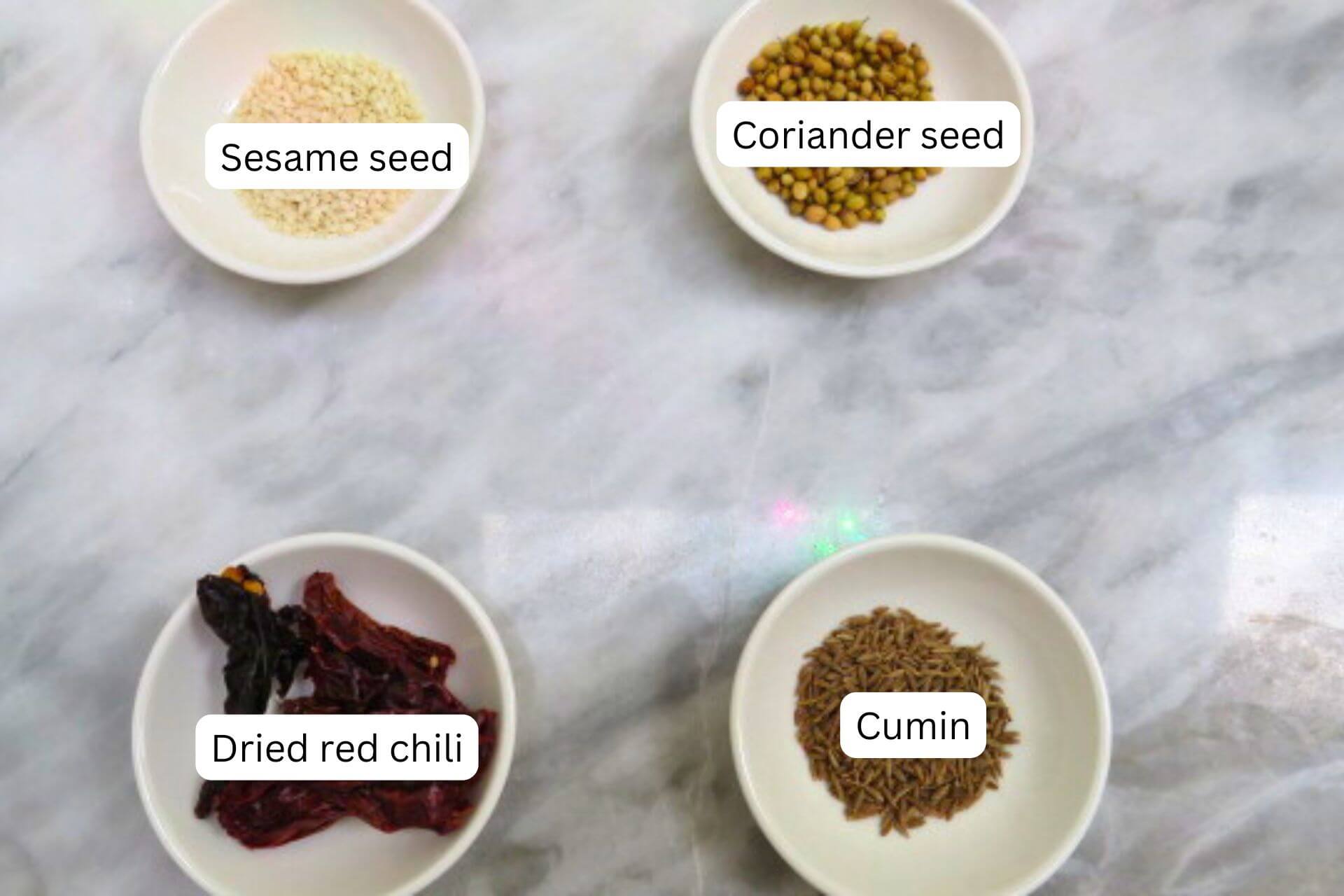
- Spices: cumin, coriander, garam masala, sesame seeds, and fresh green chili
For the sauce/gravy:
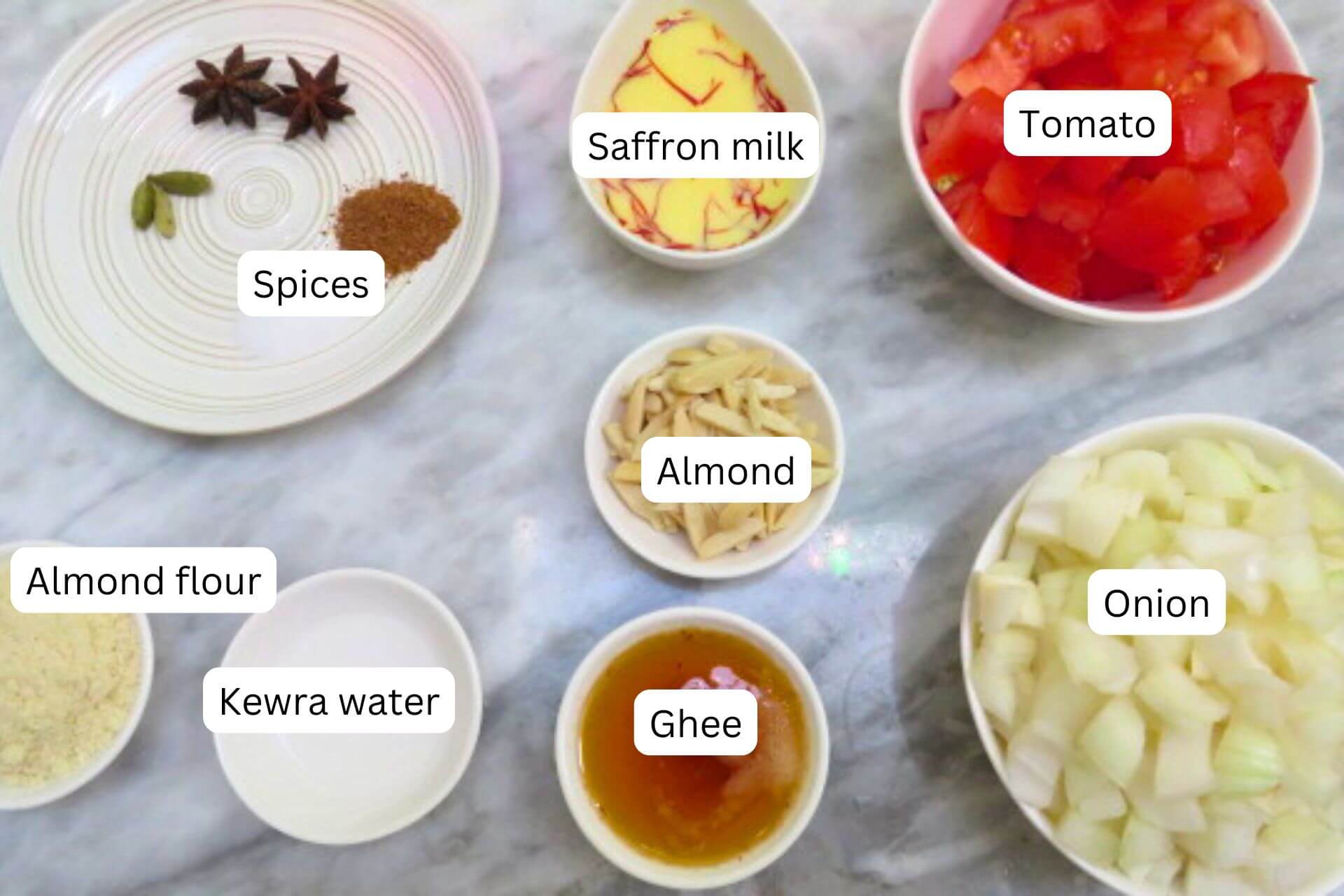
- Onions and tomatoes
- Ghee or clarified butter
- Saffron: strands crushed with palms and soaked in warm milk
- For tempering: whole star anise, green or black cardamom
- Nuts: Almond slivers or slices and ground whole almonds; (cashew nuts are a good substitute)
- Kewra water
Here are the step-by-step instructions on how to make this dish. For the measurements, please refer to the recipe card below.
How to make the Chicken Pasanda using my recipe:
- Marinate the bite-size chicken breast cubes for 30-45 minutes. Air fry the chicken at 400 degrees F for 15 minutes after drizzling one tablespoon of ghee on them. I used a foil-lined tray.
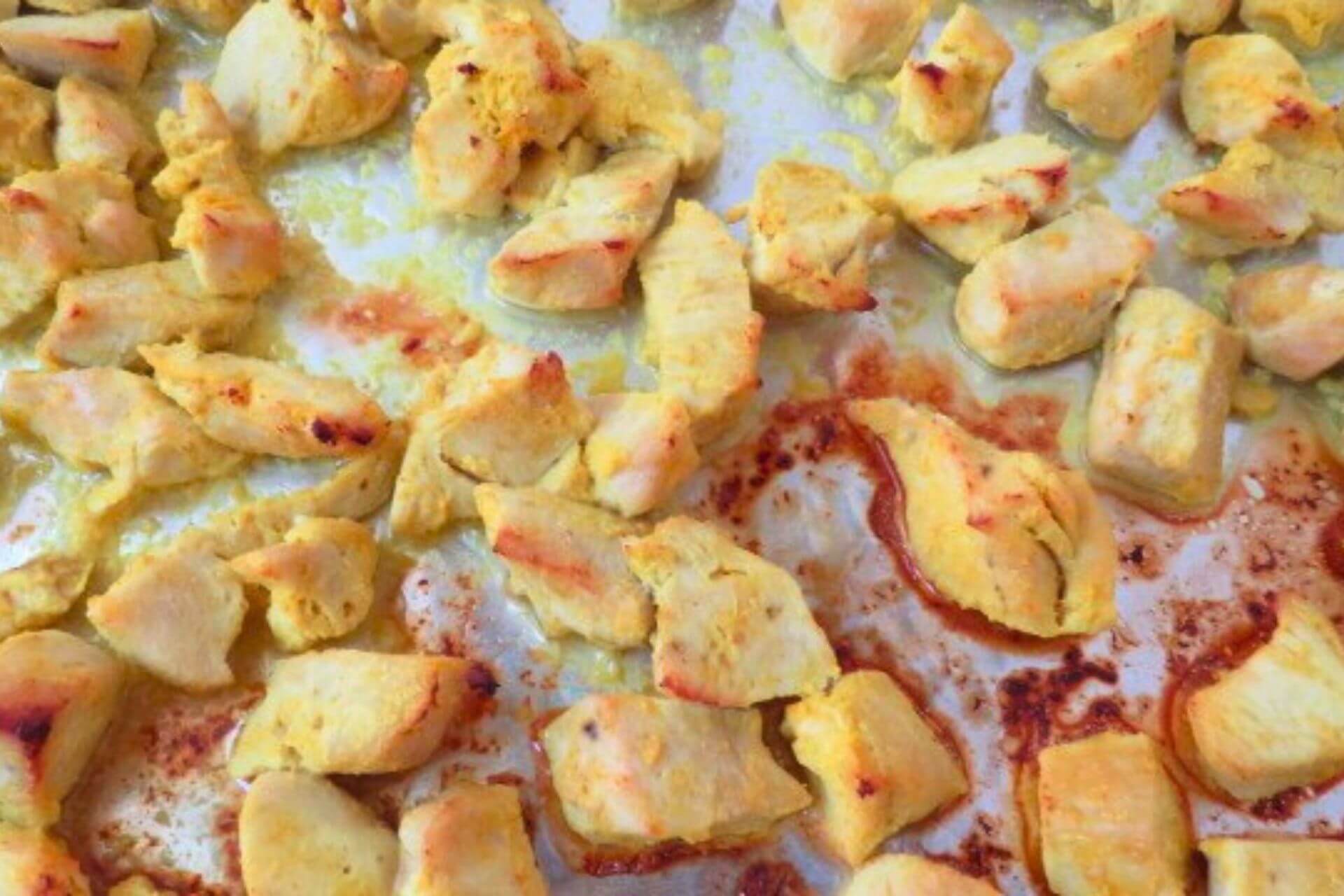
2. Roast the spices on low heat until they are fragrant or turn brown. Grind the ingredients for the spice mixture. Set it aside.
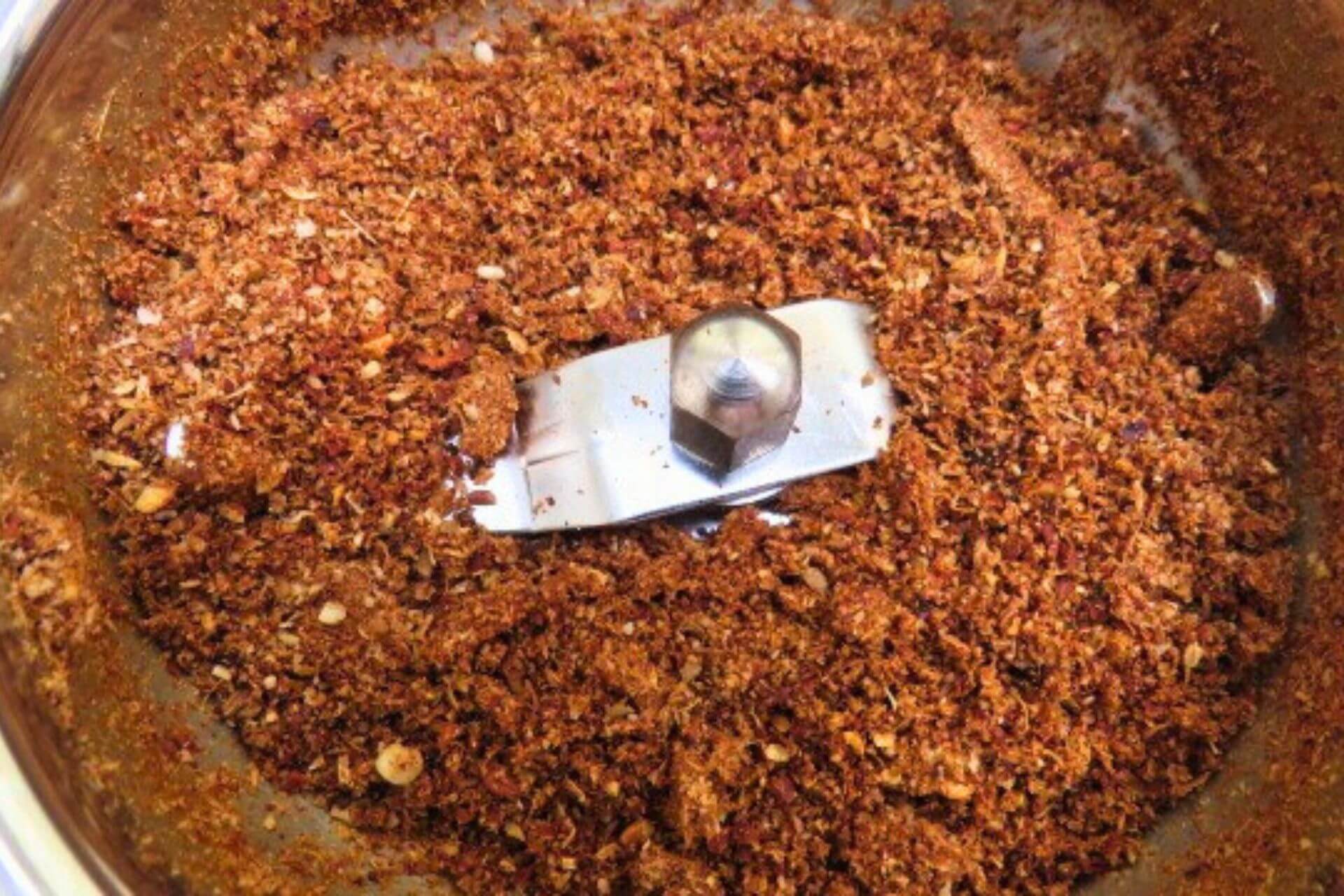
3. In a medium saucepan, heat the ghee, add the chopped onions, and sauté for 3-5 minutes or until lightly caramelized. Add the tomatoes and sauté until they become mushy for 3-4 minutes.
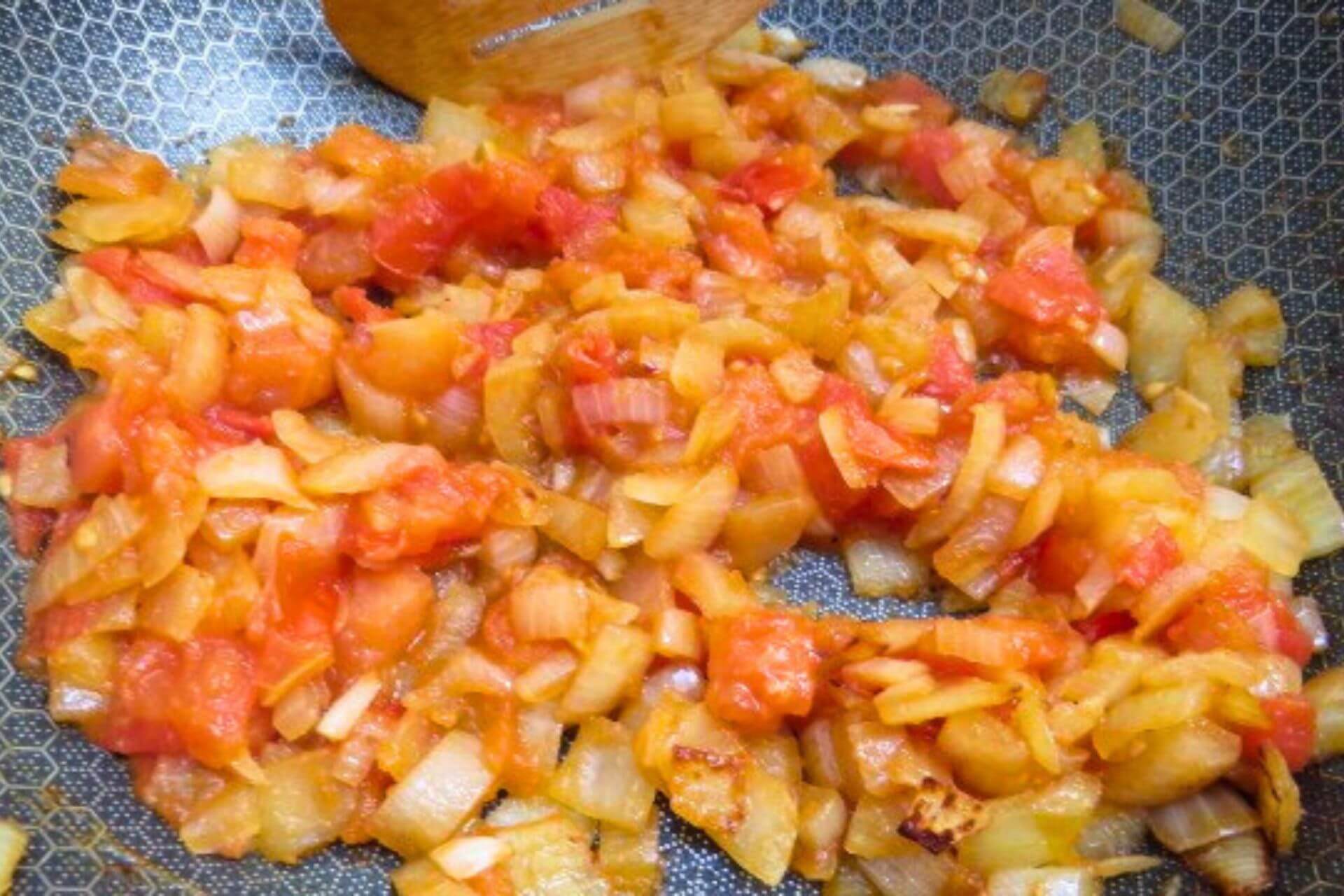
4. Cool and grind the onions and tomatoes in a spice grinder or food processor.
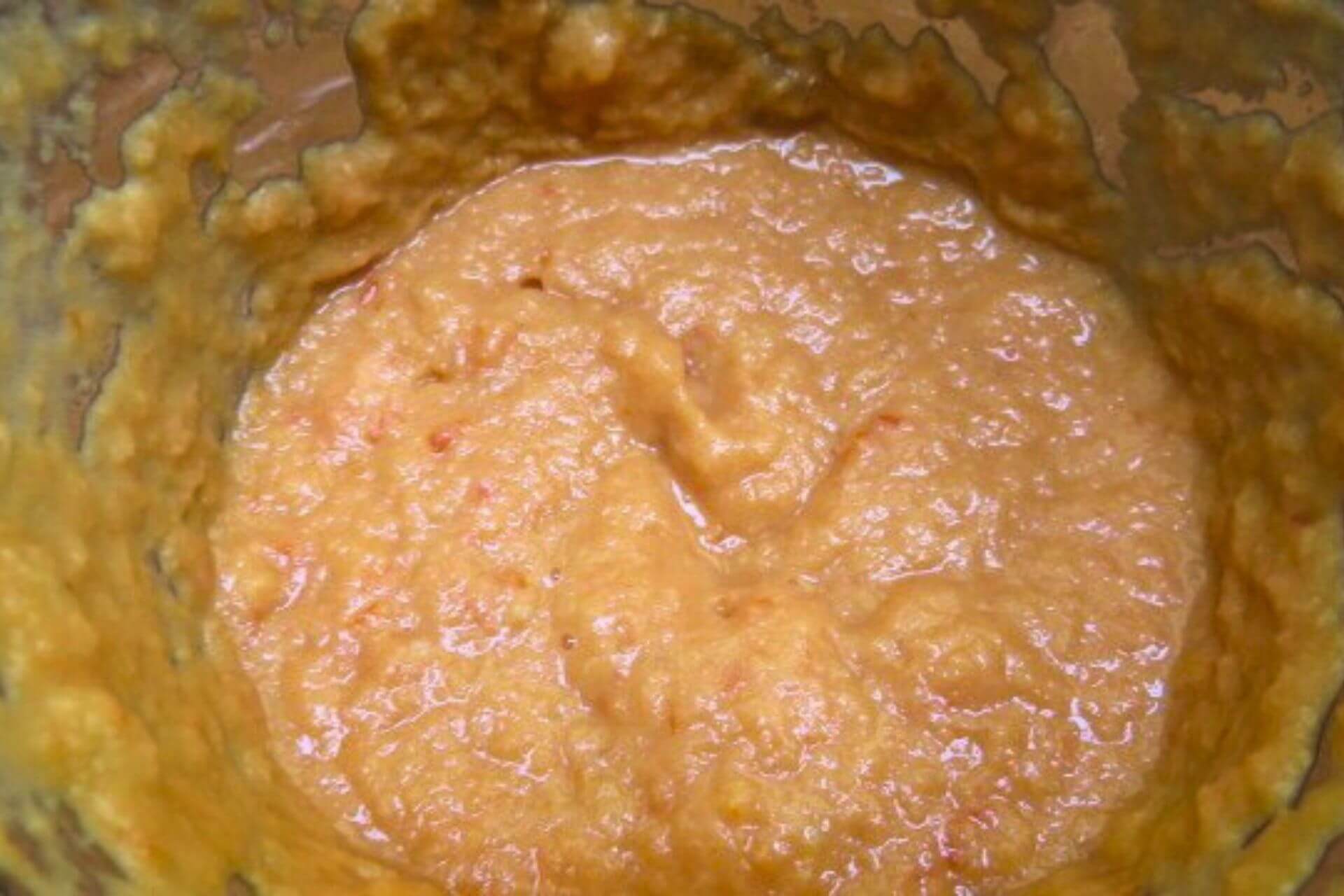
5. In the same pan, add the onion-tomato mixture, the freshly ground spice mixture, and 1 cup of water or leftover juices from air frying the chicken or leftover water from washing the spice grinder. Season with salt. Add the chicken pieces and cover with a lid. Cook on low to medium heat for 10 minutes.
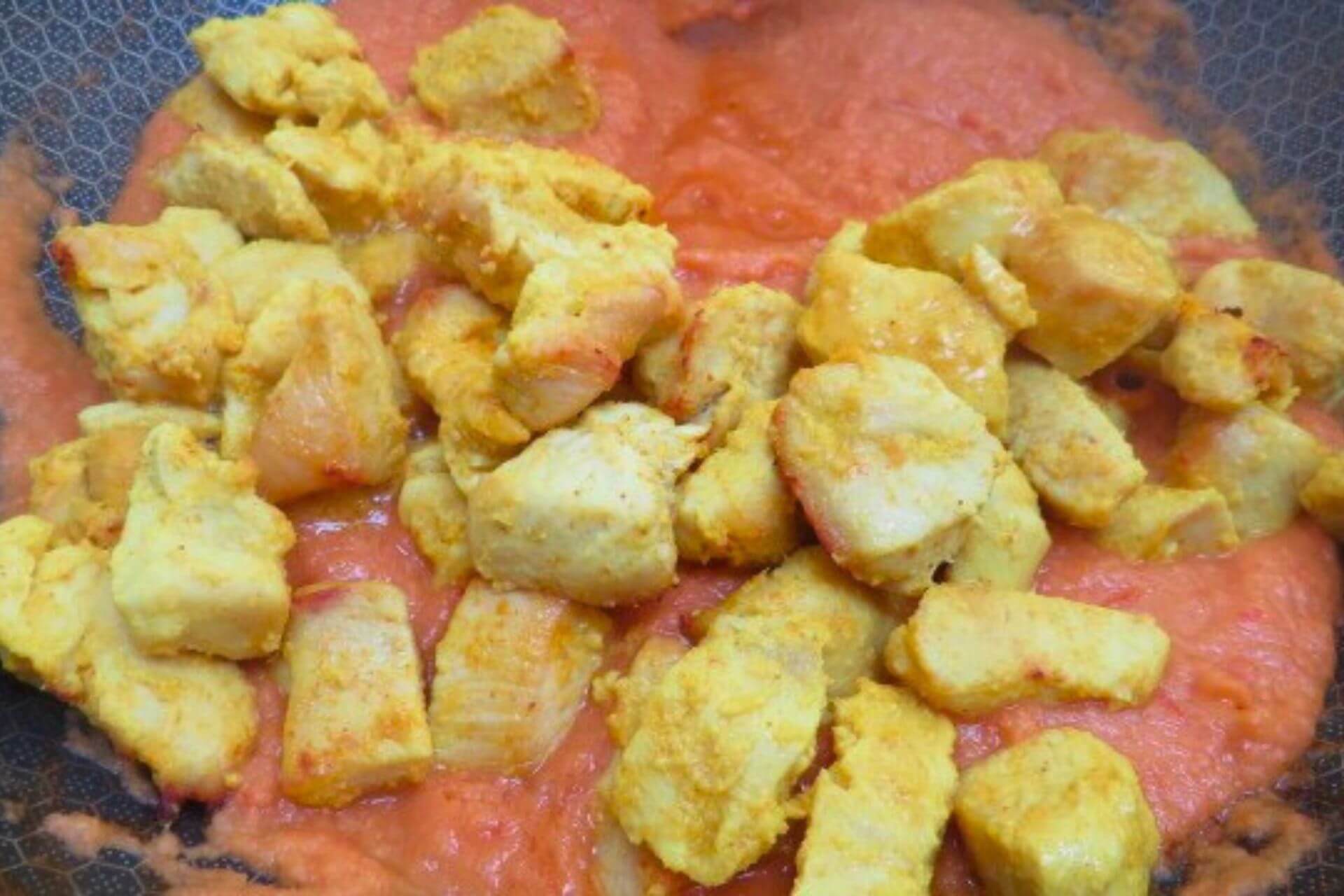
6. Add the garam masala, almond flour, and saffron milk. Cook for a minute and turn off the heat.

7. Add a few drops of kewra water and garnish with the toasted almond slivers. Heat a teaspoon of ghee in a small pan and temper star anise and cardamom. Pour this tempering on the Chicken Pasanda and serve it with Basmati rice or naan.
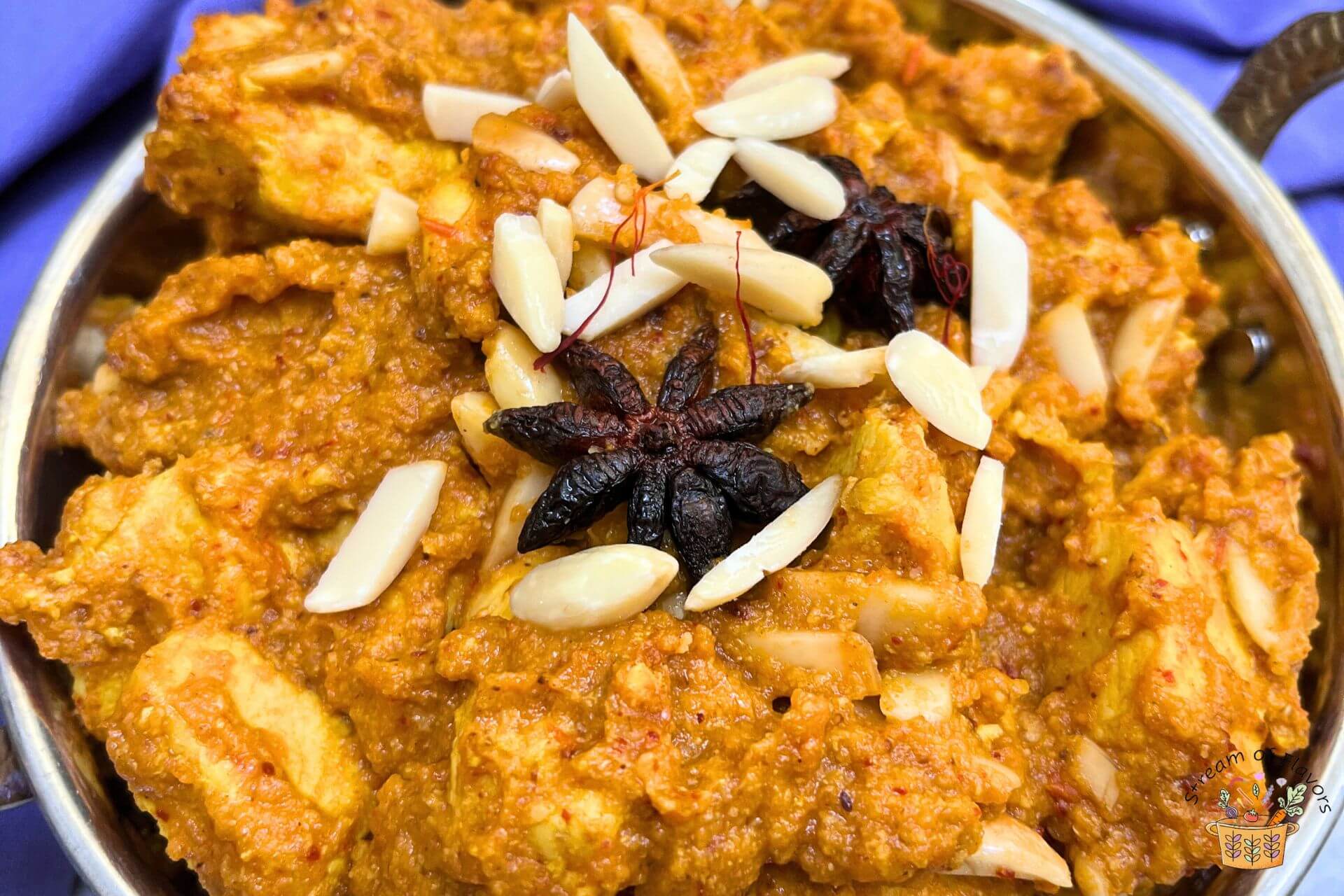
1. Soak the saffron strands in warm milk for at least 5-10 minutes after rubbing them with your palms to infuse the flavor.
2. Grinding the onions and tomatoes to a coarse paste will result in a thick and luscious gravy at the end.
3. Roasting the spices enhances the flavor of the dish. Do not over-roast the spices or they will make the dish slightly bitter.
4. If you like more gravy, add half a cup of water. To thicken the gravy, add a tablespoon of almond flour.
5. Adjust the spices when you taste test the recipe. To make it spicier, add more dried chili powder. I have used Kashmiri red chilis which are milder in heat and flavor.
Serving suggestions:
Serve the Chicken Pasanda with naan, any Indian bread, or on a bed of Basmati rice. I have served it with cooked quinoa, freekeh, and semolina.
Storage:
This recipe for Chicken Pasanda allows for it to be refrigerated for 2 to 3 days or frozen for three months in an airtight box.
Other chicken recipes that you might like:
Chicken Pasanda Recipe
Equipment
- saucepan, air fryer
Ingredients
For the marinade:
- 1¾ lb chicken breast boneless
- 2 tbsp ginger-garlic paste
- 2 tbsp whole Greek yogurt plain
- ¼ tsp turmeric powder
- ½ tsp salt
For the spice mixture:
- 1 tsp cumin seed
- 1½ tsp coriander seed
- 1 tsp sesame seed
- 4 dried red chili Kashmiri
For the gravy:
- 3 tbsp clarified butter (ghee)
- 2 star anise
- 3 green cardamom
- 2 onion chopped fine
- 2 tomato
- 3 tbsp whole milk
- ¼ tsp saffron soaked in the milk
- ¾ tsp salt
- 3 tbsp almond flour
- ½ tsp garam masala powder
- 2 tsp kewra water optional
- 2 tbsp almond sliver toasted
Instructions
- Prepare the ingredients for the marinade. Marinate the bite-size chicken breast cubes for 30-45 minutes.
- Meanwhile, prepare the ingredients for the spice mixture.
- Roast the spices on low heat until they are fragrant or turn brown. Grind the ingredients for the spice mixture. Set it aside.
- Air fry the chicken at 400 degrees F for 15 minutes after drizzling one tablespoon of ghee on them. I used a foil-lined tray.
How to make the Chicken Pasanda gravy:
- Prepare the ingredients. Soak the saffron strands in warm milk.
- In a medium saucepan, heat the ghee, and add the chopped onions, and sauté for 3-5 minutes or until lightly caramelized. Add the tomatoes and sauté until they become mushy for 3-4 minutes.
- Cool and grind the onions and tomatoes in a spice grinder or food processor.
- In the same pan, add the onion-tomato mixture and add the freshly ground spice mixture and 1 cup of water or leftover juices from air frying the chicken or leftover water from washing the spice grinder. Season with salt. Add the chicken pieces, and cover with a lid. Cook on low to medium heat for 10 minutes.
- Add the garam masala, almond flour, and saffron milk. Cook for a minute and turn off the heat.
- Add a few drops of kewra water and garnish with the toasted almond slivers. Heat a teaspoon of ghee in a small pan and temper star anise and cardamom. Pour this tempering on the Chicken Pasanda and serve it with Basmati rice or naan.
Notes
Nutrition


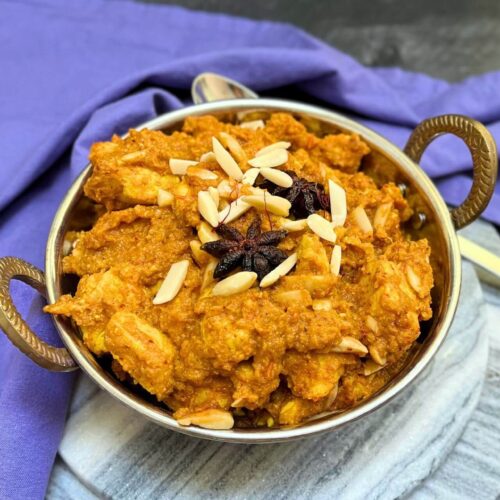
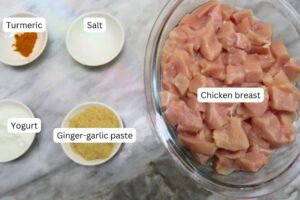
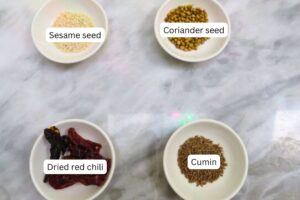
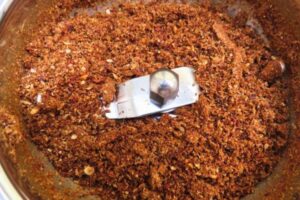
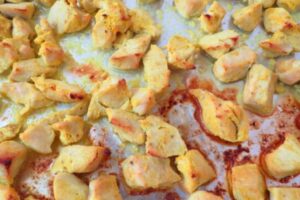
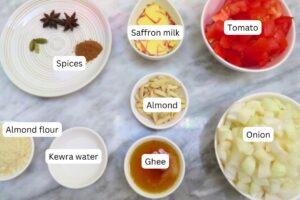
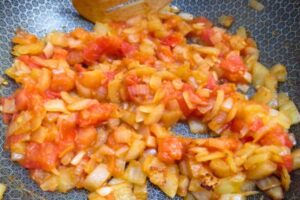

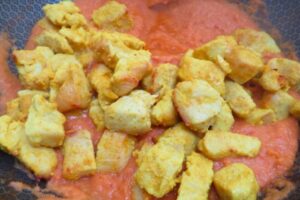
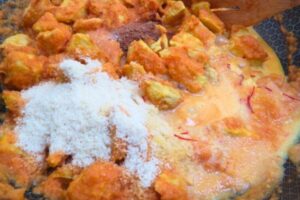
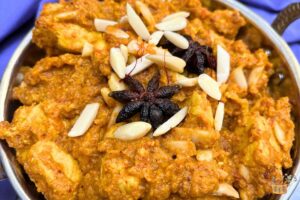




















So I had a wonderful time making this for our Christmas dinner. Not only was this so easy to make, I love the creamy flavor of this pasanda. Loved it!!
Thanks for the positive comment!